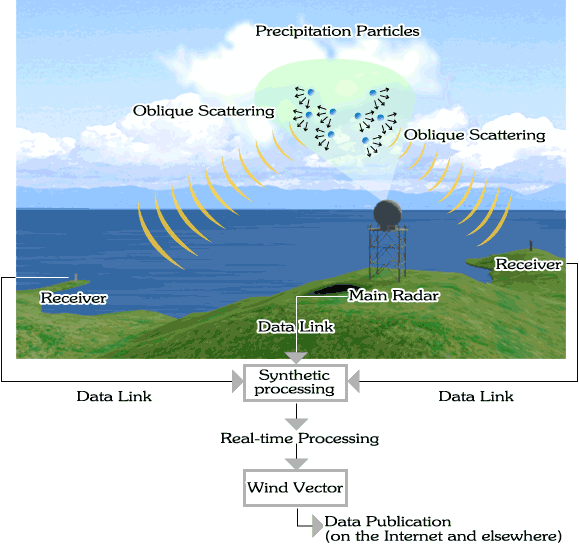
Principles of Bistatic Radar Network
Doppler observations are carried out using the main COBRA radar to evaluate the background winds within a precipitation area. This information is combined with Doppler-shift measurements (taken by the two bistatic receiver units) of oblique scattering due to precipitating particles. This enables rapid determination of a precise three-dimensional wind-velocity field for a large area.




|